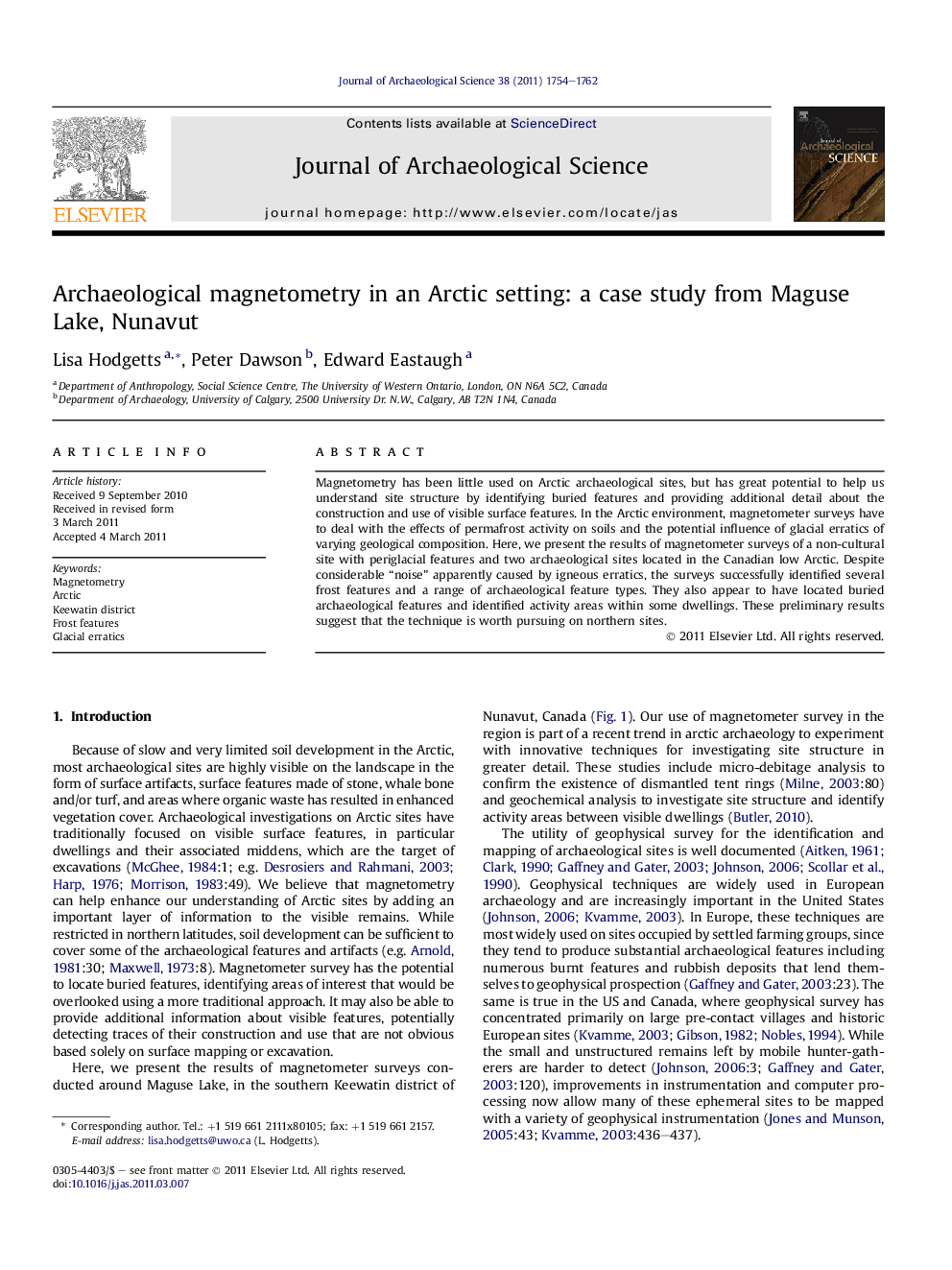| Article ID | Journal | Published Year | Pages | File Type |
|---|---|---|---|---|
| 1035870 | Journal of Archaeological Science | 2011 | 9 Pages |
Magnetometry has been little used on Arctic archaeological sites, but has great potential to help us understand site structure by identifying buried features and providing additional detail about the construction and use of visible surface features. In the Arctic environment, magnetometer surveys have to deal with the effects of permafrost activity on soils and the potential influence of glacial erratics of varying geological composition. Here, we present the results of magnetometer surveys of a non-cultural site with periglacial features and two archaeological sites located in the Canadian low Arctic. Despite considerable “noise” apparently caused by igneous erratics, the surveys successfully identified several frost features and a range of archaeological feature types. They also appear to have located buried archaeological features and identified activity areas within some dwellings. These preliminary results suggest that the technique is worth pursuing on northern sites.
► We apply magnetometry to archaeological sites in Canadian low Arctic. ► Igneous glacial erratics produce considerable “noise”. ► Survey successfully identifies frost features and range of archaeological feature types. ► We suggest combining magnetometry with magnetic susceptibility in future.
